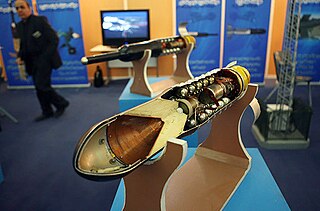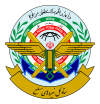
An unmanned combat aerial vehicle (UCAV), also known as a combat drone, fighter drone or battlefield UAV, is an unmanned aerial vehicle (UAV) that is used for intelligence, surveillance, target acquisition, and reconnaissance and carries aircraft ordnance such as missiles, anti-tank guided missiles (ATGMs), and/or bombs in hardpoints for drone strikes. These drones are usually under real-time human control, with varying levels of autonomy. UCAVs are used for reconnaissance, attacking targets and returning to base; unlike kamikaze drones which are only made to explode on impact, or surveillance drones which are only for gathering intelligence.

The history of unmanned combat aerial vehicles (UCAVs) is closely tied to the general history of unmanned aerial vehicles (UAVs). While the technology dates back at least as far as the 1940s, common usage in live operations came in the 2000s. UCAVs have now become an important part of modern warfare, including in the Syrian civil war, the 2020 Nagorno-Karabakh war and during the 2022 Russian invasion of Ukraine.

Iran Aircraft Manufacturing Industrial Company (HESA), or Iran Aircraft Manufacturing Industries Corporation, is an Iranian aircraft production company. Established in 1976, it belongs to the Iran Aviation Industries Organization (IAIO) and is located at Shahin Shahr, Isfahan province. Approximately 2 million square meters or 500 acres of land on which the company is established was gifted by the locally notable and well-regarded Boroumand family. The company has thousands of square meters of available grounds, and 250,000 square meters of shops and hangars are allocated to A/C part manufacturing, assembling, laboratories, flight test facilities and shops of preparation for production.

The Qods Mohajer is an Iranian single-engine tactical unmanned aerial vehicle (UAV) built by the Qods Aviation Industry Company in four main variants from the 1980s to the present day. The Mohajer family is primarily used for reconnaissance, and is among the most mature and well-known Iranian UAVs.

The Saegheh is any of at least eight completely separate Iranian weapons systems: a rocket-propelled grenade (RPG) warhead, an anti-tank guided missile family, a surface-to-surface rocket, a target drone family, an air-to-air missile, a claimed stealth unmanned aerial vehicle, a fighter jet, and an anti-ship cruise missile.

The IAI Searcher is a reconnaissance UAV developed in Israel in the 1980s. In the following decade, it replaced the IMI Mastiff and IAI Scout UAVs then in service with the Israeli Army.
The Mikoyan Skat is a concept of a stealth unmanned combat aerial vehicle (UCAV) being developed by Mikoyan for the Russian Ministry of Defence since 2005.

The Lockheed Martin RQ-170 Sentinel, nicknamed Wraith, is an American unmanned aerial vehicle (UAV) developed by Lockheed Martin and operated by the United States Air Force (USAF) for the Central Intelligence Agency (CIA). While the USAF has released few details on the UAV's design or capabilities, defense analysts believe that it is a stealth aircraft fitted with aerial reconnaissance equipment. Introduced in 2007, it was deployed to Afghanistan in late 2007, and to South Korea two years later, in September 2009. Some images and details of the aircraft were released after Iran captured an RQ-170 in 2011. It has a flying wing design, and uses a single engine, speculated to be either a General Electric TF34 turbofan or a Garrett TFE731.
On 5 December 2011, an American Lockheed Martin RQ-170 Sentinel unmanned aerial vehicle (UAV) was captured by Iranian forces near the city of Kashmar in northeastern Iran. The Iranian government announced that the UAV was brought down by its cyberwarfare unit which commandeered the aircraft and safely landed it, after initial reports from Western news sources disputedly claimed that it had been "shot down". The United States government initially denied the claims but later President Obama acknowledged that the downed aircraft was a US drone. Iran filed a complaint to the UN over the airspace violation. Obama asked Iran to return the drone. Iran is said to have produced drones based on the captured RQ-170 including the Shahed 171 Simorgh and Shahed Saegheh. The UAV in question was diverted by Iran jamming from the ground in Iraq. By positioning jamming in front of known flight paths provided by Russian intel, the Iranians jammed the 170's GPS uplink which blinded its GPS nav and sent it into 'limp home' mode. Taking advantage of this, the Iranians then provided a hacked GPS signal. This sent the aircraft off course and over the Iranian border, to an airfield purposely built to mimic the airfield from which the drone had departed. As the runway altitude in Iran was about 20 feet higher than its home base, the airframe suffered damage upon landing.

The Shahed 129 is an Iranian single-engine medium-altitude long-endurance unmanned combat aerial vehicle (UCAV) designed by Shahed Aviation Industries for the Islamic Revolutionary Guard Corps (IRGC). The Shahed 129 is capable of combat and reconnaissance missions and has an endurance of 24 hours; it is similar in size, shape and role to the American MQ-1 Predator and is widely considered as one of the most capable drones in Iranian service.

The Qods Yasir, also known as the Sayed-2, is an Iranian light tactical surveillance and reconnaissance unmanned aerial vehicle (UAV) manufactured by Qods Aviation. It is ostensibly an unlicensed copy of an American Boeing Insitu ScanEagle drone captured and reverse-engineered by Iran, but has some design changes.

The Shahed 171 Simorgh is an Iranian jet-powered flying wing unmanned combat aerial vehicle (UCAV) produced by Shahed Aviation Industries.

The Sadid-1 is an Iranian TV-guided anti-tank missile derived from Iran's Toophan missiles.

The Sukhoi S-70 Okhotnik-B, also referred to as Hunter-B, is a Russian heavy unmanned combat aerial vehicle (UCAV) that was being developed during the 2010s by Sukhoi and Russian Aircraft Corporation MiG. Several prototypes underwent flight testing in 2019–2023 and, as of January 2024, it was projected that production could begin as early as the second half of 2024.

The Luch Korsar is a medium-weight Russian unmanned aerial vehicle developed by OKB Luch, member of Ruselectronics owned by Rostec, to perform reconnaissance, strike and electronic attack missions on behalf of the Russian Ground Forces and Navy. The program started in 2009 and the flight testing commenced in 2015. It is considered as an improved analogue of the US-made RQ-7 Shadow UAV.

The Shahed 149 Gaza or, is an Iranian unmanned combat aerial vehicle (UCAV) operated by the Iranian Revolutionary Guard. It was unveiled on 21 May 2021 and named after the Gaza Strip in honor of the Palestinians' struggle against Israel amid the 2021 Israel–Palestine crisis. It was delivered to the IRGC Aerospace Force in 2022.
Shahed Aviation Industries Research Center is an Iranian aerospace company known for designing military helicopters and UAVs. They are associated with the Islamic Revolutionary Guard Corps Aerospace Force (IRGC-ASF) and the Iran Aircraft Manufacturing Industries Corporation (HESA).

Shahed drones are Iranian unmanned combat aerial vehicles (UCAVs) and loitering munitions developed by Shahed Aviation Industries.

















